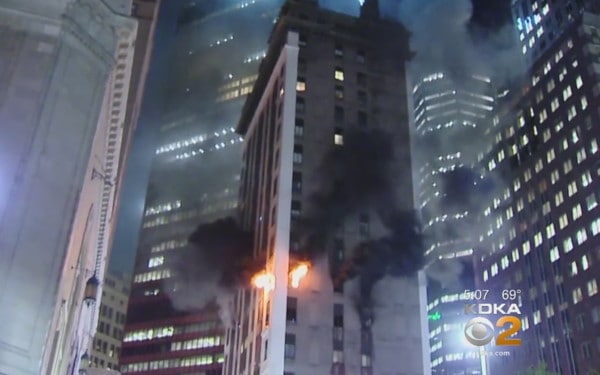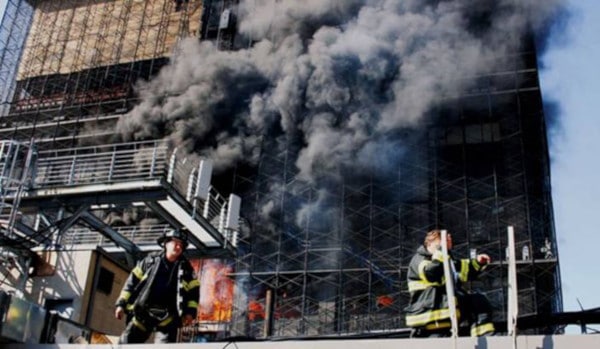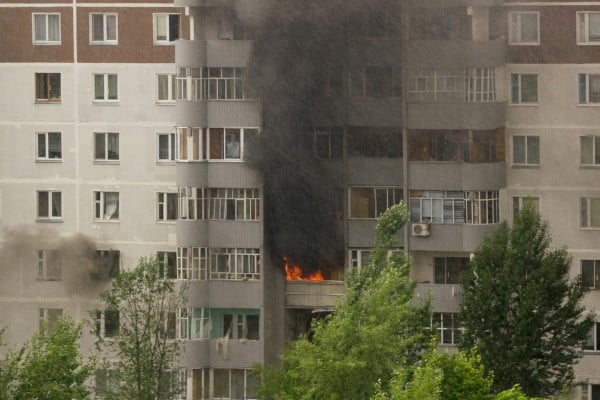A look at shifting fire safety in a dynamic legislative landscape
Thanks to progressive fire safety codes, most new commercial buildings today have fire sprinklers installed, with the United States recording the largest number of systems. Fire sprinklers provide a crucial safety barrier for occupants in retail stores, offices, apartments, warehouses, and other commercial buildings.
While sprinklers have been employed for more than 140 years, it wasn’t until the 1960s that regulations and codes that mandate fire sprinkler installations were first enacted. After compiling impressive statistics on the effectiveness of sprinklers in saving lives and protecting property, fire safety groups began to fight for code updates that would require broader installation of them across different types of buildings.
The role of standards in shaping local requirements
Model building and fire codes today are based on certain factors, such as how many people are typically on a premises, the height and size of the building, and its purpose. But not all model codes exactly agree on the specifics. In many cases, the requirement is a function of life safety whereas others place a focus on property protection as well as life safety.
In the International Building Code (IBC) for example, all residential occupancies, regardless of size, require sprinklers. Other types of occupancies have two scenarios that can lead to sprinklers: size or occupant load. The IBC defines occupant load as “The number of persons for which the means of egress of a building or portion thereof is designed.”
Various IBC requirements also depend on size while factoring in occupant load and/or occupancy type. Educational facilities and most Assembly occupancies, for example, will require sprinklers when the size exceeds 12,000 square feet or 300 people, whichever comes first. With restaurants and night clubs, this threshold is 5,000 square feet or 100 occupants, respectively. Other types of spaces are driven solely by the size of the space, such as Mercantile and many Storage occupancies (S-1), which both require sprinklers when they hit 12,000 square feet.
Once enacted by state and local governments in the U.S., these codes are often revised and amended. And though code often mandates fire sprinklers in new construction, existing buildings may be a different matter. Depending on a structure’s age, size, and purpose, it’s hit or miss whether it has a fire sprinkler system and whether local law requires owners to retrofit that particular building.
Avoidable tragedies spur the introduction of laws for fire sprinkler installations
Retrofits are becoming increasingly common for commercial buildings as more governments adopt them as laws, in whole or in part. Ordinances often provide options like an engineered life safety system in place of sprinkler coverage, bigger floor area restrictions, extended egress pathways, compartmentation, and/or sprinkler coverage only in the common areas, among other elements to satisfy fire protection goals.
Still, retrofitting an existing building can be an expensive proposition, which is why new ordinances are often met with stiff opposition from building owners and residents. Unfortunately, it’s often a public tragedy that serves as the impetus for new legal mandates. And even then, some fight passage of the laws.

Case in point: a May 15, 2017 fire at the Midtown Towers building in downtown Pittsburgh, PA killed one resident and displaced 100 others. In September of the following year, a resolution was introduced in the Pittsburgh City Council that would require high-rise buildings 75 feet or higher to have automatic sprinkler systems, with 12 years to install them. Pittsburgh Fire Chief Darryl Jones argued that “If the building would have been fully sprinklered, the fire would have been extinguished, there would have been no loss of life, and it would have been a non-news event.”
Nevertheless, the resolution has been delayed after residents and building owners furiously pushed back, citing concerns over the expense of complying with the law, as well as a lack of exceptions for buildings with other fire protection measures.
Cities and states have evolving building codes
New York City faced similar pressures to improve fire codes following disasters such as the Happy Land Social Club fire in 1990 and the Deutsche Bank fire in 2007. In the aftermath of a 1998 fire that killed four people in an affluent Upper West Side apartment building, the city enacted Local Law 10 (of 1999), which requires all newly constructed residential apartment buildings with three or more units to be protected with automatic fire sprinkler systems. At that time, existing residential high-rise buildings remained exempt from fire sprinkler requirements.
Over the past 20 years, hundreds of high-rise office buildings in the city have been made safer due to tougher requirements for fire sprinkler installations. Many of the installations were mandated by Local Law 26, which passed in 2004 and came out of recommendations from a task force put together after the Sept. 11, 2001, terror attacks to review safety standards. More than 1,200 office buildings that are at least 100 feet high and were built before 1984, when sprinklers became a requirement in new buildings, have until July 1, 2019 to complete sprinkler retrofits.

Other cities and states have followed a similar track. In Florida, legislation is currently under review at the state level that would force existing high rise condos to install sprinkler systems or an engineered life safety system by January 2023. The law would require these multi-family structures to have sprinklers in each unit, or at a minimum, in common areas in conjunction with smoke alarms, fire extinguishers, and other fire safety measures.
All condos built since the 1990s are already required to have fire control systems, but buildings put up prior have continually been given time extensions to install the sprinklers. Pushback on the measure has been ongoing for several years, largely led by condo associations and homeowners who balk at the price tag of sprinkler systems.
Retrofit requirements moving forward across the U.S.
A 2017 NFPA report underscores the value of automatic fire sprinkler systems: the chances of dying in a fire are reduced by up to 75 percent when sprinklers deploy.
With mounting evidence on the benefits of fire sprinklers, state and local governments across the country continue to move forward with sprinkler retrofit requirements for high-rises, hotels and apartments, nightclubs, public assemblies, and other commercial buildings. A 2018 legislative review from Sprinkler Age provides a snapshot of the status of sprinkler retrofit requirements for various buildings across numerous states:
- Connecticut, Florida, Michigan, Minnesota, New Jersey, and Virginia have retrofit requirements for nursing homes.
- Florida, Nevada, and Virginia currently have enacted retrofit requirements for hotels and apartments. Connecticut and Virginia require retrofits only for hotels.
- New Jersey has established retrofit requirements for institutional occupancies.
- New Jersey and Virginia have enacted retrofit requirements for college dorms, and Illinois for dorms and Greek houses.
- High-rise retrofit requirements are in place in California, Florida, Louisiana, New Jersey, and Nevada.
- Massachusetts requires retrofits for nightclubs while Michigan has retrofit requirements pending for college dorms and correctional facilities.
- Oregon is considering retrofit requirements for high rises.
Incentives can help spur retrofit activities
While building owners generally don’t disagree with fire authorities over the rationale for protecting their buildings with fire sprinklers, the issue is largely centered on cost. The passage of the Tax Cuts and Jobs Act (TCJA) in 2017 provides much-needed relief in that regard. The law incentivizes investment in life-saving fire protection systems by allowing businesses to deduct the full expense (up to $1 million) of installing or upgrading a fire suppression system.
Because the law allows business owners to deduct the expense in the tax year the equipment is placed in service, they are able to more quickly recover the cost of the upfront investment. Previously, the cost of commercial fire protection systems was capitalized and depreciated over a recovery period of 5, 7, 15, or 39 years, depending on certain factors such as system type and whether the installation involved owned or leased property.
In its current form, the law only applies to commercial structures and cannot be used for retrofitting or installing sprinklers in residential structures. Proponents are still pushing for some sort of tax benefit that incentivizes smaller residential installations. Still, the legislation marks a significant achievement, and it’s a testament to the persistence of fire safety advocacy groups and select lawmakers after years of lobbying.
The long-term trend toward increased fire sprinkler installations is clear
With aggressive new legislation in a number of states forcing businesses and building owners to meet increasingly tough fire codes, fire sprinkler installations are becoming more common in new construction and existing structures. In some cases, older buildings which had previously been exempted from new regulations are now being held to today’s safety standards. And we can expect more local governments to adopt stricter model codes, spurring additional sprinkler installations and retrofits.
Stay tuned for a deeper examination of fire sprinkler installation and retrofit requirements that focus on the residential sector, including a detailed look at recent legislative activity, recurring battles, and more long-term trends.
If you’re looking to buy components for a fire sprinkler system, check out QRFS’s selection of commercial sprinkler heads, as well as our sprinkler gauges, valves, switches, and other system components.
If you have any questions or need help finding an item, give us a call at 888.361.6662 or email support@qrfs.com.
This blog was originally posted at blog.qrfs.com. Read more at Facebook.com/QuickResponseFireSupply or on Twitter @QuickResponseFS.



Hello, There is a hotel in California that is 10,000 square foot built in 1983 -41 room occupancy. Is this place required to install a fire sprinkler system? Thank you so much for you help! – Jordan
Jordan — For code questions like this, you can try our Ask a Fire Pro service. Click the link to submit your question with some information about your building or system, and a fire protection professional will provide an answer based on standards and codes. Our pros include AHJs, contractors, engineers, and code experts with 150+ years of combined experience!
Hello,
I live in a older 12 story apartment building in Southfield, MI that was built in the late 70’s. Also, I’m a disabled wheelchair user who lives on the 8th floor of the said older 12 story apartment building in Southfield, MI, and was wondering if this building would be considered exempt from installing sprinklers or be required to install sprinklers on each of the 12 floors?
Thank you!
Chris – For code questions like this, you can try our Ask a Fire Pro service. Click the link to submit your question with some information about your building, and a fire protection professional will provide an answer based on best practices, standards, and codes. Our pros include AHJs, contractors, engineers, and code experts with 150+ years of combined experience!